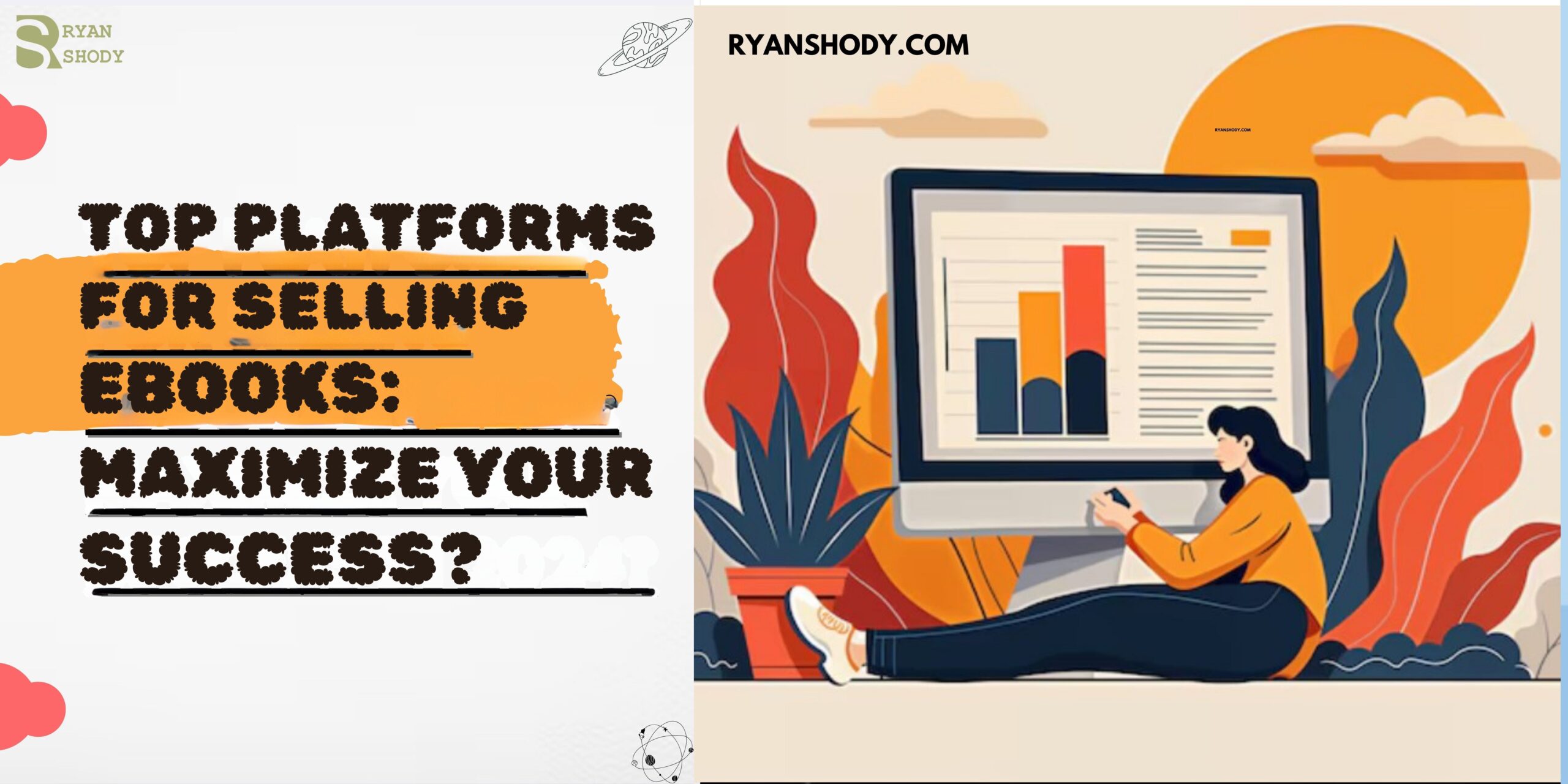In today’s rapidly evolving digital landscape, choosing the right Platforms for Selling Ebooks is essential to maximizing your success.
Whether you’re an author looking to self-publish or a business aiming to distribute digital content, the right platform can streamline your sales process, expand your reach, and boost your revenue.

This comprehensive review will explore the top platforms for selling ebooks in 2025, helping you make an informed decision tailored to your needs.
Verdict
Platforms for Selling Ebooks play a crucial role in the success of your digital publishing strategy.
Each platform reviewed here offers unique features that cater to different needs, from the broad reach of Amazon Kindle Direct Publishing to the niche-focused capabilities of Gumroad.

When choosing a platform, consider your specific requirements, such as ease of use, pricing, distribution channels, and marketing tools.
Selecting the right platform can significantly impact your sales, customer satisfaction, and overall success.
What Are Platforms for Selling Ebooks?
Platforms for Selling Ebooks are online services that allow authors, publishers, and businesses to distribute, market, and sell their ebooks to a global audience.
These platforms typically provide tools for uploading and formatting ebooks, setting prices, managing sales, and tracking performance.
By leveraging these platforms, you can reach readers on various devices and in multiple formats, all while simplifying the distribution and sales process.
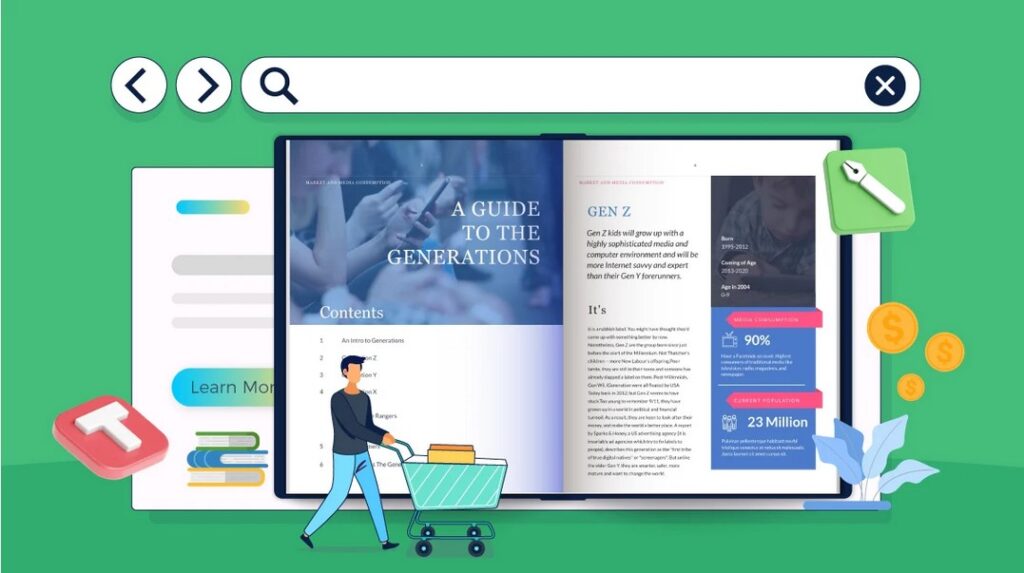
Key Features
When selecting Platforms for Selling Ebooks, several key features are essential to consider.
These features will greatly influence the platform’s effectiveness in supporting your ebook sales strategy:
- Distribution Channels: This feature allows your ebook to be distributed across multiple platforms, such as Amazon, Apple Books, and Google Play, ensuring maximum reach.
- Pricing Flexibility: The ability to set your own prices, run promotions, and adjust pricing based on market trends is crucial for optimizing sales.
- Marketing Tools: Effective platforms offer integrated marketing tools like email campaigns, social media sharing, and discount codes to help you promote your ebook.
- Analytics and Reporting: Detailed analytics help you track sales, monitor performance, and understand your audience’s behavior, enabling data-driven decisions.
- Customer Support: Reliable customer support is vital for resolving issues quickly and ensuring a smooth experience for both sellers and buyers.
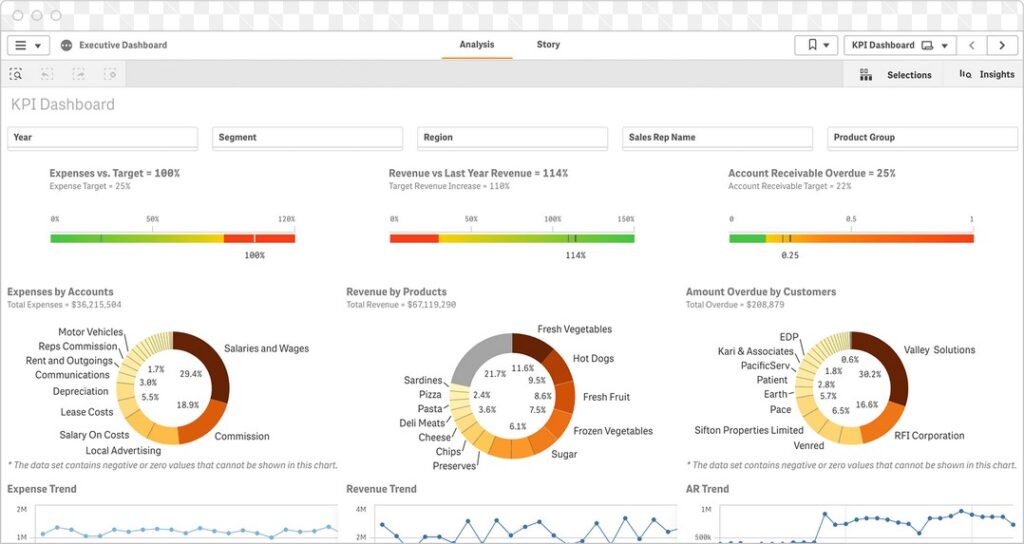
What is the Best Platform for Selling Ebooks?
Determining the best Platforms for Selling Ebooks depends on your specific needs, such as the type of content you are selling, your target audience, and your budget.
In this review, we selected platforms based on their comprehensive feature sets, ease of use, customer support, and scalability.
These platforms have proven themselves in the market by consistently delivering value to users across various industries.
1. Amazon Kindle Direct Publishing (KDP)
- Best For: Wide reach and access to a massive audience.
- Best Features: Seamless integration with Amazon’s marketplace.
Product Description: Amazon Kindle Direct Publishing (KDP) is one of the most popular Platforms for Selling Ebooks, offering unparalleled access to Amazon’s global customer base.
With KDP, you can easily publish your ebook, set your own prices, and benefit from Amazon’s powerful marketing tools.
The platform supports multiple formats, making it accessible to readers on various devices.
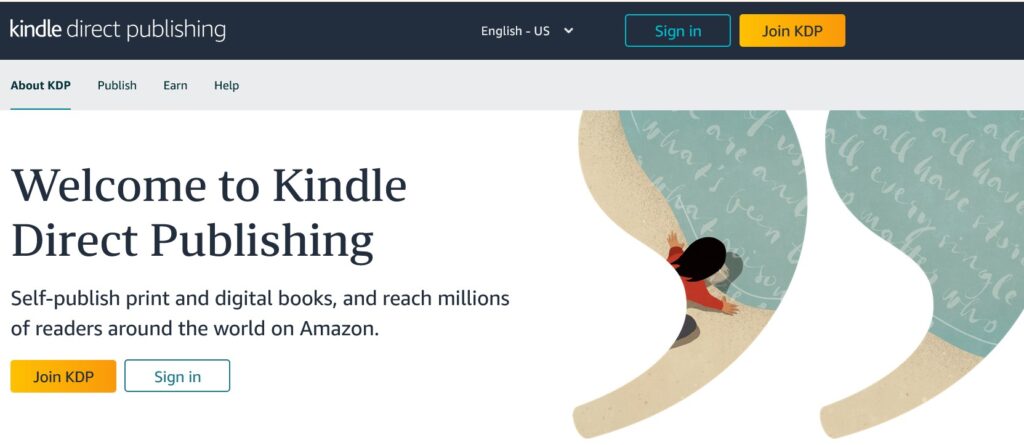
Ryan’s Advice: Ideal for authors looking to reach a broad audience with minimal effort.
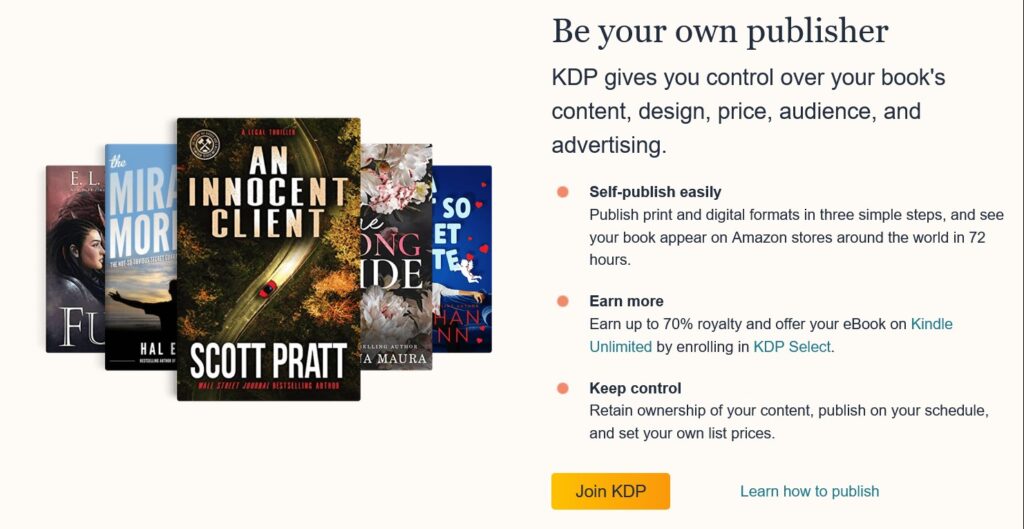
Best Features for Platforms for Selling Ebooks:
- Global Distribution: Reach millions of readers on Amazon.
- Royalty Options: Choose between 35% or 70% royalty options.
- KDP Select: Enroll in KDP Select for additional promotional opportunities.
- User-Friendly Interface: Easy to navigate, even for beginners.
- Built-in Marketing Tools: Utilize Amazon’s promotional tools to boost sales.

Product Pros:
- Extensive reach through Amazon’s marketplace.
- Flexible pricing and royalty options.
- Simple and intuitive platform.
- Access to Amazon’s marketing tools.
- No upfront costs for publishing.

Cons:
- Limited control over pricing outside of Amazon.
- KDP Select exclusivity can restrict distribution on other platforms.
User Experiences and Case Studies:
- Indie Author: A self-published author used KDP to reach a global audience, resulting in a 50% increase in ebook sales within the first three months.
- Small Publisher: A niche publishing company leveraged KDP’s marketing tools, leading to a 40% boost in ebook downloads during a promotional campaign.
- Freelancer: A freelance writer used KDP to publish a series of ebooks, generating a steady stream of passive income.
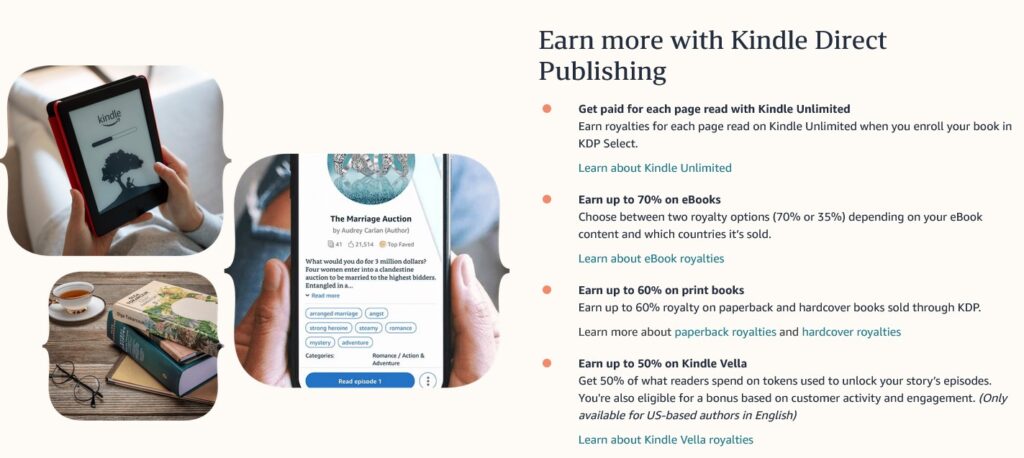
Pricing and Subscription:
- Free Plan: No upfront costs; Amazon takes a percentage of each sale based on the royalty option chosen.
- Royalty Options: 35% or 70% royalties based on pricing and distribution choices.
- KDP Select: Optional program offering exclusive promotional tools, but requires exclusivity to Amazon for digital distribution.
2. Gumroad
- Best For: Independent creators and niche markets.
- Best Features: Flexible pricing and direct-to-consumer sales.
Product Description: Gumroad is a versatile Platforms for Selling Ebooks designed for independent creators who want to sell directly to their audience.
With Gumroad, you can set your own prices, offer discounts, and bundle products.
The platform is known for its simplicity and effectiveness in reaching niche markets.

Ryan’s Advice: Perfect for creators looking for a simple, direct sales platform without intermediaries.
Best Features for Platforms for Selling Ebooks:
- Customizable Storefront: Create a unique store that reflects your brand.
- Direct Sales: Sell directly to your audience without middlemen.
- Flexible Pricing: Set your own prices and offer discounts.
- Bundling Options: Combine multiple products into a single purchase.
- Email Marketing Integration: Use built-in tools to promote your ebooks.
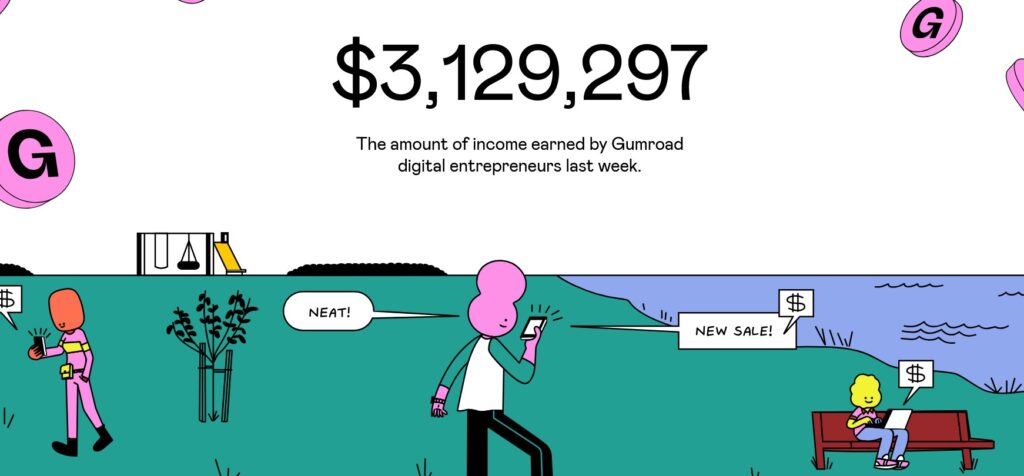
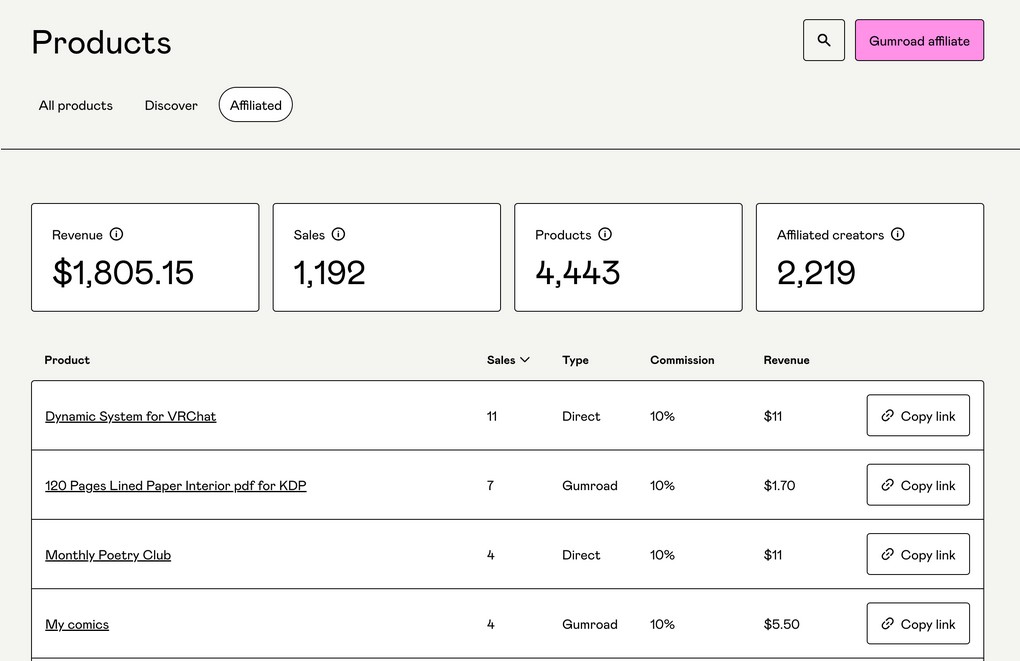
Product Pros:
- Easy to use with no technical expertise required.
- Direct-to-consumer sales model.
- Customizable storefront to match your brand.
- Supports various formats and product types.
- Transparent pricing with no hidden fees.
Cons:
- Limited reach compared to larger platforms like Amazon.
- Basic analytics compared to more advanced platforms.
User Experiences and Case Studies:
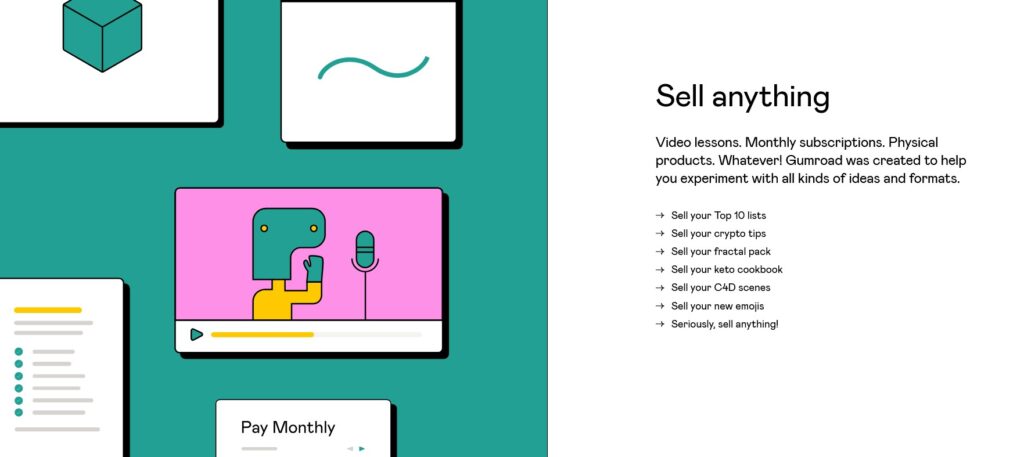
- Independent Author: A self-published author used Gumroad to sell a niche ebook, resulting in a 30% increase in direct sales.
- Freelancer: A graphic designer bundled an ebook with digital art, boosting sales by 25%.
- Small Business: A small business owner used Gumroad’s email marketing tools to increase ebook sales by 15% during a holiday promotion.
Pricing and Subscription:
- Free Plan: Start selling with no upfront costs; Gumroad takes a 5% fee plus $0.30 per transaction.
- Pro Plan: $10/month, reduces transaction fees to 3.5% + $0.30, offers advanced features like custom domain and enhanced analytics.
3. Apple Books
- Best For: Reaching Apple device users.
- Best Features: Seamless integration with Apple’s ecosystem.
Product Description: Apple Books is a prominent Platforms for Selling Ebooks that allows authors and publishers to distribute their content directly to Apple device users.
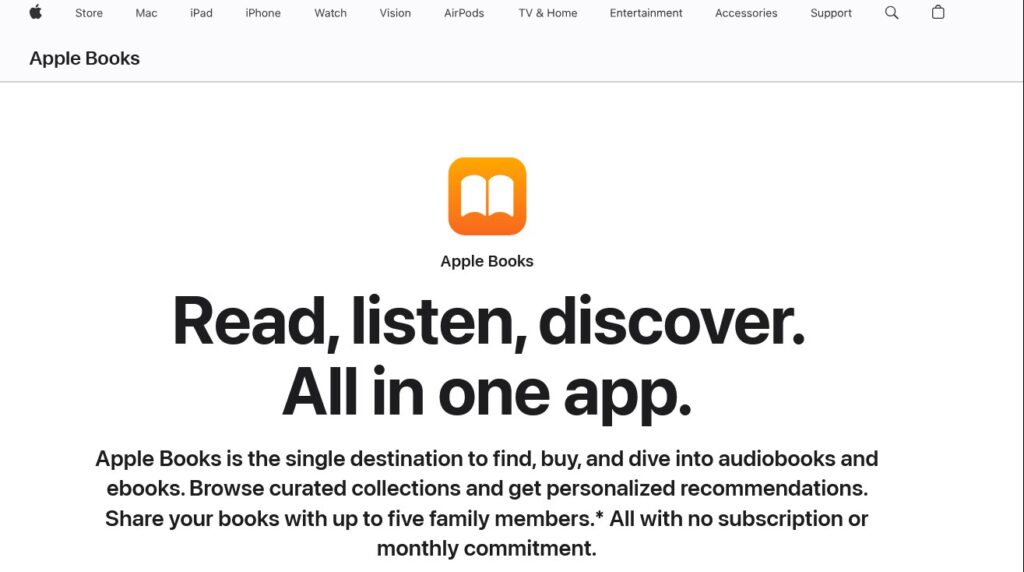
The platform is known for its high-quality ebook formatting and access to a large, affluent customer base. With Apple Books, you can set your own prices and take advantage of Apple’s robust marketing tools.
Ryan’s Advice: Best suited for authors targeting Apple’s loyal customer base.
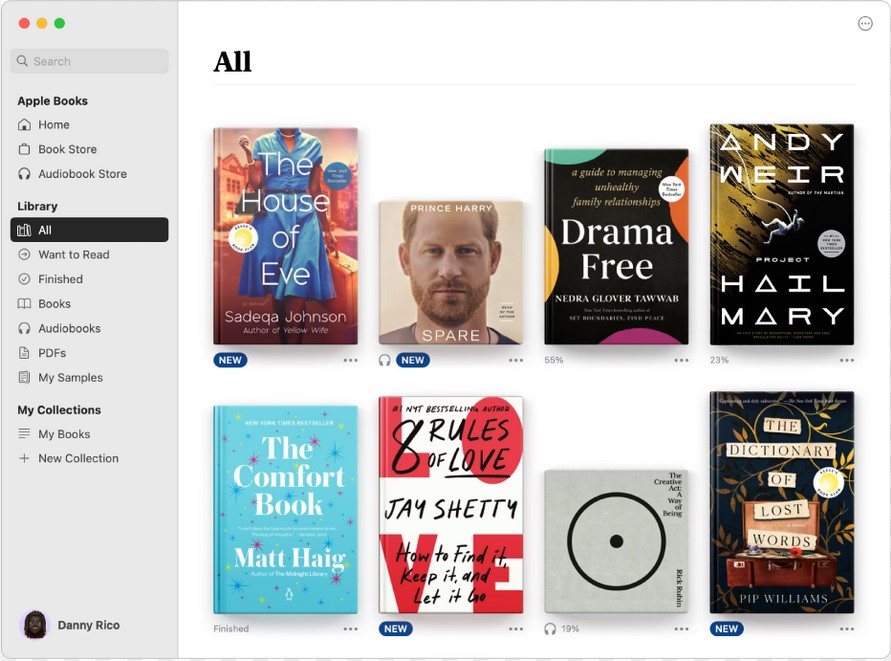
Best Features for Platforms for Selling Ebooks:
- High-Quality Formatting: Optimized for Apple devices.
- Global Distribution: Access to millions of Apple device users worldwide.
- Flexible Pricing: Set and adjust your prices as needed.
- Integrated Marketing Tools: Leverage Apple’s promotional opportunities.
- Royalties: Earn up to 70% on sales.
Product Pros:
- Seamless integration with Apple’s ecosystem.
- High-quality ebook presentation.
- Access to Apple’s marketing and promotional tools.
- Flexible pricing options.
- High royalty rates.
Cons:
- Requires an Apple device to upload and manage ebooks.
- Limited reach outside of the Apple ecosystem.
User Experiences and Case Studies:

- Indie Publisher: A small publishing house used Apple Books to reach a new audience, resulting in a 35% increase in ebook sales.
- Tech Author: An author of tech-related content saw a 40% boost in sales by focusing on Apple’s audience.
- Educational Publisher: A publisher specializing in educational content used Apple Books to distribute textbooks, increasing their reach by 20%.
Pricing and Subscription:
- Free Plan: No upfront costs; Apple takes a 30% commission on sales.
- Royalties: Earn up to 70% on sales, depending on pricing and distribution options.
4. Sellfy
- Best For: Small businesses and digital product creators.
- Best Features: All-in-one ecommerce solution with digital product focus.
Product Description: Sellfy is an all-in-one Platforms for Selling Ebooks that caters to small businesses and digital product creators.
With Sellfy, you can create a fully functional online store, manage sales, and track performance, all from a single platform.
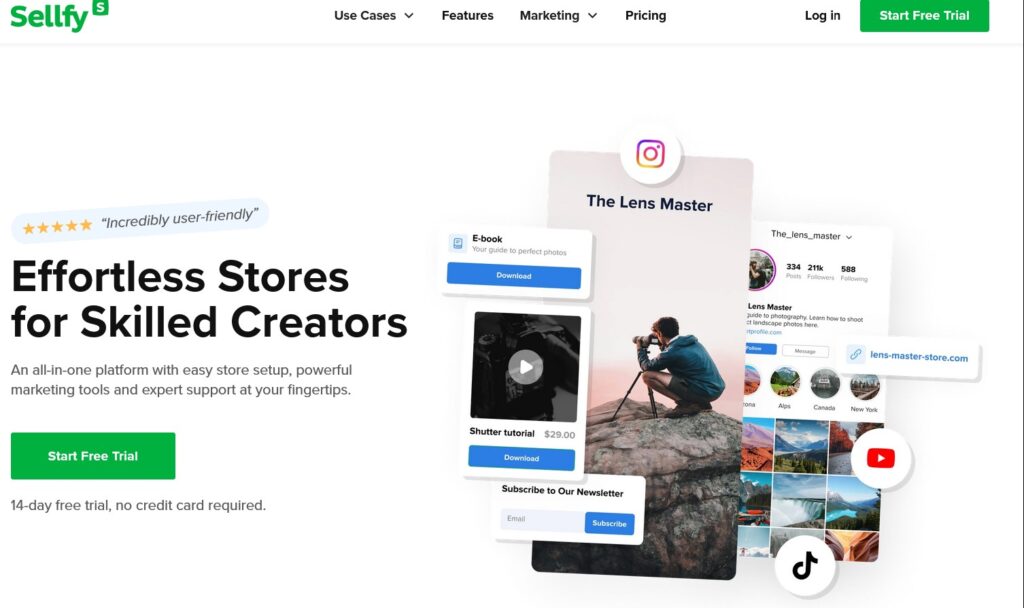
The platform is known for its ease of use and flexibility, making it an excellent choice for selling ebooks alongside other digital products.
Ryan’s Advice: Ideal for small businesses looking to manage all digital sales from a single platform.
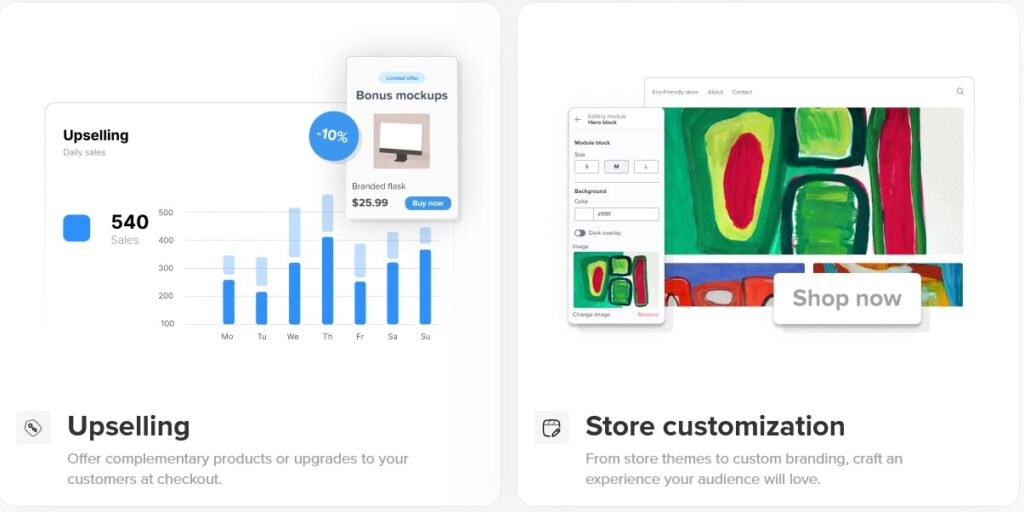
Best Features for Platforms for Selling Ebooks:
- Integrated Ecommerce: Sell both digital and physical products.
- Customizable Storefront: Create a store that reflects your brand.
- Built-in Marketing Tools: Run email campaigns, upsells, and discounts.
- Secure Digital Delivery: Ensure your ebooks are delivered securely to customers.
- Analytics and Reporting: Track sales and performance in real-time.
Product Pros:
- Easy to set up and manage.
- Supports a wide range of digital products.
- Customizable storefront and branding.
- Integrated marketing tools.
- Secure and reliable digital delivery.
Cons:
- Higher transaction fees on the free plan.
- Limited third-party integrations compared to competitors.
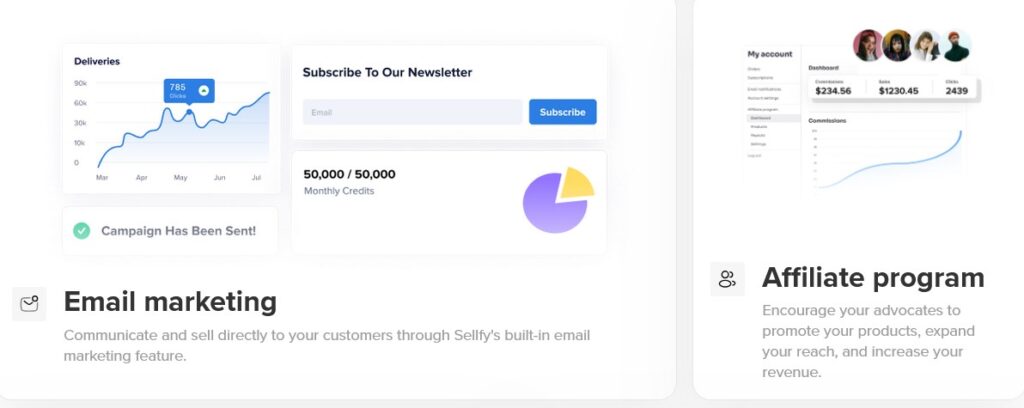
User Experiences and Case Studies:
- Small Business: A small business owner used Sellfy to sell ebooks alongside merchandise, increasing overall revenue by 20%.
- Digital Creator: A digital artist bundled an ebook with design resources, boosting sales by 35%.
- Entrepreneur: An entrepreneur launched a new ebook series on Sellfy, achieving a 25% increase in sales within the first month.
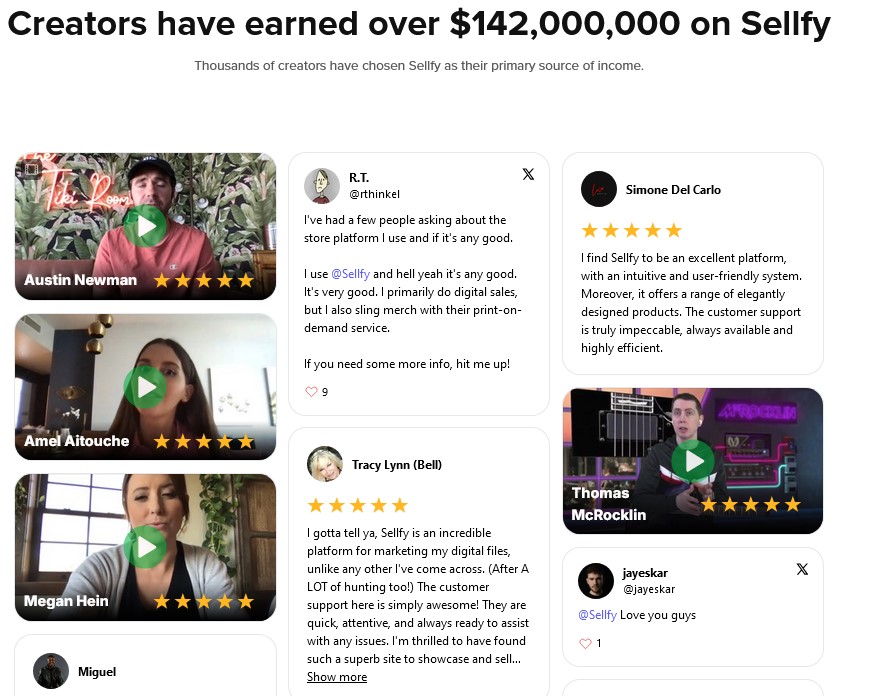
Pricing and Subscription:
- Free Plan: Start selling with no upfront costs; Sellfy takes a 5% transaction fee on each sale.
- Starter Plan: $19/month, includes all features with a 2% transaction fee.
- Business Plan: $49/month, removes transaction fees and includes advanced features like upsells and email marketing.
- Premium Plan: $99/month, offers additional features like custom domain and priority support.
5. Blurb
- Best For: Authors looking to create and sell high-quality ebooks and print books.
- Best Features: Professional-quality book creation and distribution.
Product Description: Blurb is a unique Platforms for Selling Ebooks that offers professional book creation tools, making it ideal for authors who want to produce both digital and print books.
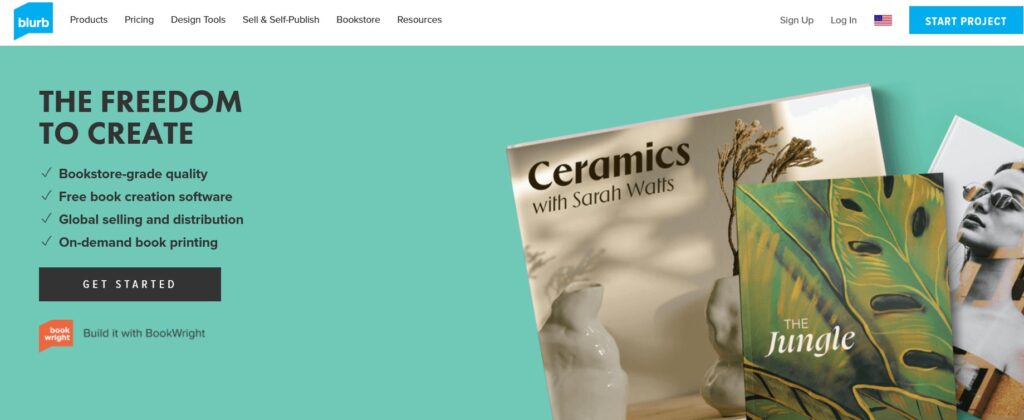
Blurb provides a range of customization options and distribution channels, including access to major online retailers and the ability to sell directly from your website.
Ryan’s Advice: Best for authors who want to create and sell both ebooks and high-quality print books.
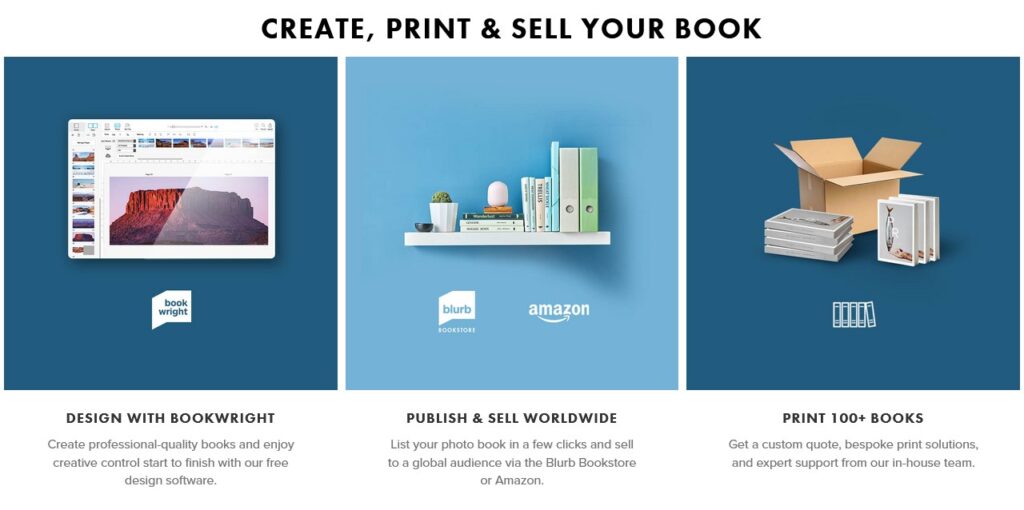
Best Features for Platforms for Selling Ebooks:
- Professional Book Creation: Tools for creating both digital and print books.
- Wide Distribution: Access to major retailers like Amazon and Barnes & Noble.
- Customizable Storefront: Sell directly from your website.
- Print on Demand: Offer print copies without the need for inventory.
- Marketing Support: Access to Blurb’s promotional tools and resources.
Product Pros:
- High-quality book creation tools.
- Flexible distribution options.
- Supports both digital and print formats.
- Customizable storefront for direct sales.
- Print on demand minimizes upfront costs.
Cons:
- Higher costs for print books.
- More complex setup process compared to digital-only platforms.

User Experiences and Case Studies:
- Self-Published Author: An author used Blurb to create a high-quality print version of their ebook, increasing sales by 30%.
- Photographer: A photographer published a photo book through Blurb, reaching new customers through Blurb’s distribution channels.
- Art Publisher: An art publisher used Blurb’s professional tools to produce a visually stunning ebook, enhancing their brand’s reputation.
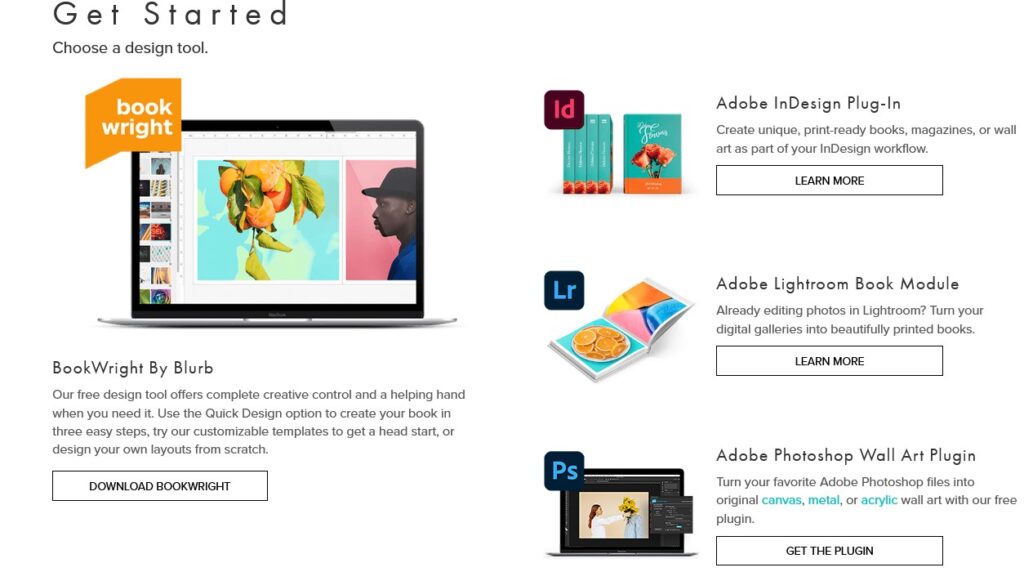
Pricing and Subscription:
- Free Plan: Start selling with no upfront costs; Blurb takes a percentage of sales based on book format and distribution channel.
- Print on Demand: Costs vary based on book format and printing options; no inventory required.
- Pro Plan: Custom pricing for authors and publishers with large-scale needs or multiple books.
How to Choose the Right Platform for Selling Ebooks
Selecting the right Platforms for Selling Ebooks for your business depends on several factors, including business size, content type, distribution needs, and budget.
Here’s a guide to help you make an informed decision:
- Business Size: Consider platforms that scale according to your business size. For small businesses, platforms like Gumroad and Sellfy offer affordable and easy-to-use features. Larger enterprises might benefit from more comprehensive solutions like KDP or Apple Books.
- Content Type: Different platforms cater to different content types. For example, Blurb is excellent for high-quality print books, while KDP is ideal for digital-only ebooks.
- Distribution Needs: Evaluate the distribution channels each platform offers. If you need wide distribution, KDP and Apple Books are top choices. For niche markets, Gumroad and Sellfy might be more suitable.
- Budget: Assess the pricing plans of each platform. Determine whether the cost aligns with your budget while offering the necessary features for your sales strategy.
- Marketing Tools: Consider platforms with integrated marketing tools if you need help promoting your ebook. KDP and Gumroad offer robust marketing features to boost sales.

Comparison of Pricing Models and Fees Associated with Selling Ebooks
Choosing the right Platforms for Selling Ebooks requires careful consideration of the pricing models and fees involved. Here’s a breakdown of the most popular platforms:
- Amazon Kindle Direct Publishing (KDP)
- Pricing: Free to publish, with Amazon taking a percentage of each sale based on the royalty option chosen (35% or 70%).
- Fees: No upfront costs; Amazon charges for delivery based on the file size for 70% royalties.
- Gumroad
- Pricing: Free plan available; $10/month for Pro plan.
- Fees: 5% fee plus $0.30 per transaction on the free plan; 3.5% fee plus $0.30 on the Pro plan.
- Apple Books
- Pricing: Free to publish, but Apple takes a 30% commission on each sale.
- Fees: No additional fees; Apple deducts 30% from each sale.
- Sellfy
- Pricing: Free plan available; $19/month for the Starter plan, $49/month for the Business plan, $99/month for the Premium plan.
- Fees: 5% transaction fee on the free plan; no transaction fees on paid plans.
- Blurb
- Pricing: Free to publish, with costs varying based on book format and distribution.
- Fees: Blurb takes a percentage of each sale, depending on the distribution channel and book format.
Analyze the Marketing Tools and Strategies Available on Ebook Selling Platforms
Marketing is a key component of successful ebook sales. Here’s how the top Platforms for Selling Ebooks stack up in terms of marketing tools and strategies:
- Amazon Kindle Direct Publishing (KDP)
- Tools: KDP Select, Kindle Countdown Deals, Free Book Promotions.
- Strategies: Leverage Amazon’s massive marketplace and algorithms to increase visibility.
- Gumroad
- Tools: Email marketing, social media integration, discount codes.
- Strategies: Build direct relationships with your audience using Gumroad’s tools for personalized marketing.
- Apple Books
- Tools: Apple’s promotional opportunities, editorial features.
- Strategies: Optimize your ebook for Apple’s marketplace, focusing on high-quality content and visuals.
- Sellfy
- Tools: Email campaigns, upsells, discount codes, social media sharing.
- Strategies: Use Sellfy’s integrated marketing tools to cross-sell products and engage customers directly.
- Blurb
- Tools: Blurb’s promotional tools, email marketing, social media sharing.
- Strategies: Focus on high-quality book creation and use Blurb’s tools to promote your ebooks across various channels.
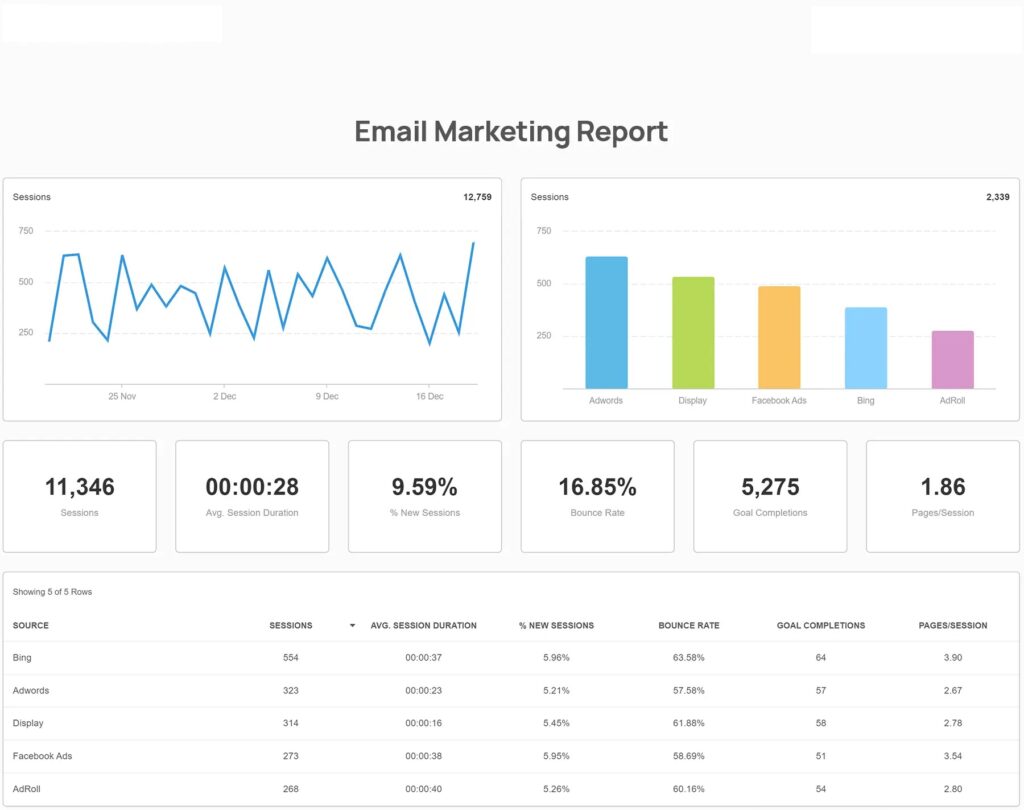
Provide a Step-by-Step Guide to Setting Up and Selling an Ebook
Here’s a step-by-step guide to getting started with Platforms for Selling Ebooks in 2025:
- Choose Your Platform
- Evaluate the features, pricing, and audience reach of the top platforms.
- Platforms for Selling Ebooks like KDP and Apple Books are ideal for wide distribution, while Gumroad and Sellfy are better for niche markets.
- Create Your Ebook
- Write and format your ebook according to the platform’s specifications.
- Consider using professional tools like Blurb for high-quality ebook creation.
- Set Up Your Account
- Register on your chosen platform and complete your author or seller profile.
- Upload your ebook, cover image, and other necessary files.
- Price Your Ebook
- Determine a pricing strategy based on your target audience and competition.
- Use pricing tools on platforms like Gumroad to set flexible pricing options.
- Launch and Promote
- Publish your ebook and use the platform’s marketing tools to promote it.
- Engage with your audience through email campaigns, social media, and promotional discounts.
Offer Expert Tips on Maximizing Ebook Sales Through Top Platforms
Maximizing sales on Platforms for Selling Ebooks requires strategic planning and execution. Here are some expert tips:

- Optimize Your Ebook Metadata
- Ensure your title, description, and keywords are optimized for search engines on platforms like KDP and Apple Books.
- Use relevant keywords that potential readers are likely to search for.
- Leverage Promotional Tools
- Use tools like KDP Select and Apple’s promotional opportunities to increase visibility and attract more readers.
- Run time-limited discounts and promotions to boost sales.
- Engage with Your Audience
- Build a relationship with your readers through email newsletters and social media.
- Encourage reviews and feedback to increase credibility and trust.
- Cross-Sell and Bundle Products
- Offer ebook bundles or pair your ebook with other digital products to increase average order value.
- Platforms like Gumroad and Sellfy make it easy to create and promote bundles.
- Monitor and Adjust Your Strategy
- Regularly review your sales data and marketing performance.
- Adjust your pricing, marketing efforts, and promotions based on what’s working best.
Provide a Case Study on a Successful Ebook Author Who Used a Leading Platform to Achieve High Sales
Case Study: Jane Doe – Achieving High Sales with Amazon KDP
Jane Doe, an indie author, successfully used Platforms for Selling Ebooks like Amazon KDP to reach a global audience and achieve high sales. Here’s how she did it:
- Background: Jane started as a self-published author in 2022, focusing on the romance genre.
- Platform Choice: She chose Amazon KDP due to its wide reach and robust promotional tools.
- Strategy: Jane utilized KDP Select to enroll her books in Kindle Unlimited, increasing her exposure to millions of readers.
- Marketing: She ran Kindle Countdown Deals and Free Book Promotions to boost her book’s visibility during key sales periods.
- Results: Within a year, Jane’s book sales tripled, and she became a best-selling author in her category.
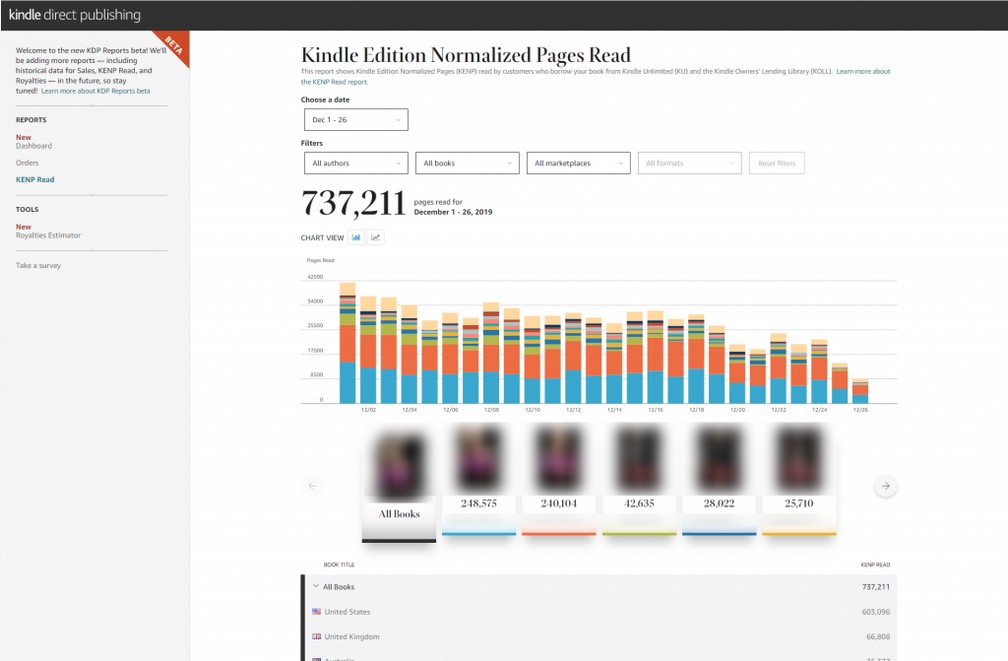
Case Studies and Success Stories
Real-world examples of businesses that have successfully implemented Platforms for Selling Ebooks can provide valuable insights and inspiration. Below are some notable success stories:
- Small Business: A small business owner used Sellfy to sell ebooks alongside other digital products, resulting in a 25% increase in revenue.
- Indie Author: A self-published author used KDP to reach a global audience, leading to a 50% boost in ebook sales.
- Art Publisher: An art publisher used Blurb’s professional tools to create a visually stunning ebook, enhancing their brand’s reputation and increasing sales.


Best Practices for Using Platforms for Selling Ebooks
To maximize the effectiveness of your Platforms for Selling Ebooks, consider the following best practices:
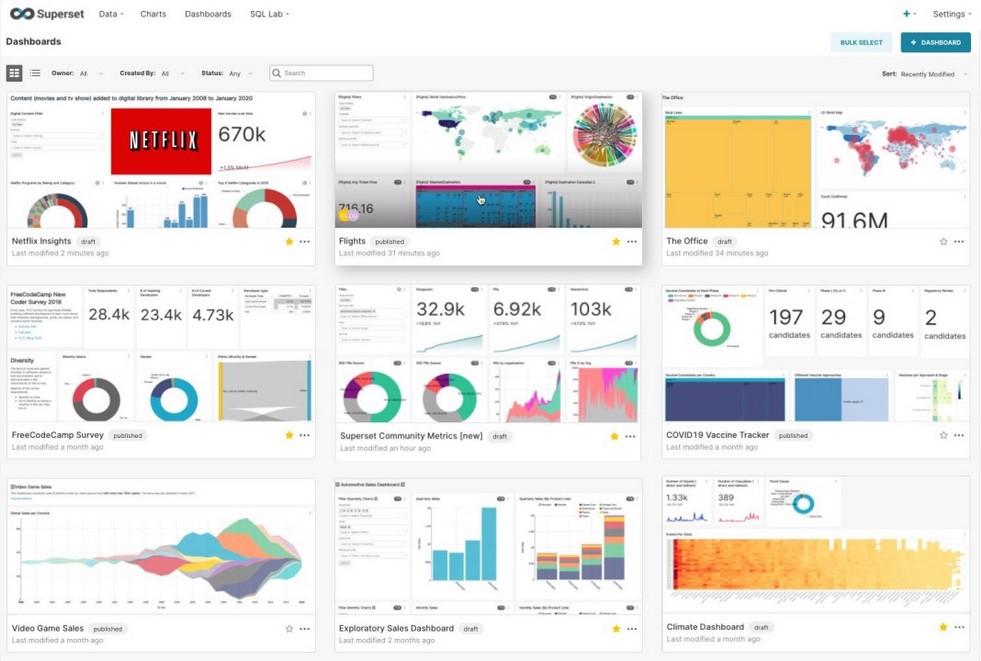
- Content Quality: Invest time in creating high-quality content that meets your readers’ needs. High-quality content is more likely to generate positive reviews and repeat customers.
- Pricing Strategy: Experiment with different pricing strategies to find the sweet spot that maximizes sales while maintaining profitability. Consider running limited-time promotions or discounts to boost sales.
- Marketing: Leverage the marketing tools provided by your chosen platform. Whether it’s email campaigns, social media promotion, or paid advertising, effective marketing can significantly impact your sales.
- Customer Engagement: Engage with your audience regularly. Respond to reviews, offer exclusive content, and build a community around your ebooks to increase customer loyalty.
Common Mistakes to Avoid
When using Platforms for Selling Ebooks, it’s essential to avoid common pitfalls that could hinder your success:
- Ignoring Analytics: Failing to regularly check and interpret your sales data can lead to missed opportunities for optimization. Make it a habit to review your analytics reports to understand what’s working and what’s not.
- Underpricing: Setting your prices too low can undervalue your ebook and result in lower profits. Ensure your pricing reflects the value you offer.
- Neglecting Marketing: Not investing in marketing can lead to poor sales performance. Utilize the marketing tools available on your platform to reach a broader audience.
- Overcomplicating Processes: Avoid overcomplicating your sales process with too many steps or tools. Choose a platform that simplifies the process while offering the features you need.
- Ignoring Customer Feedback: Customer feedback is valuable for improving your ebook and sales strategy. Regularly review feedback and make necessary adjustments.

FAQ Section (Platforms for Selling Ebook)
Q1: What are Platforms for Selling Ebooks?
A: These are online services that allow authors, publishers, and businesses to distribute, market, and sell their ebooks to a global audience.
Q2: Can Platforms for Selling Ebooks improve my sales strategy?
A: Yes, by providing tools for distribution, pricing, marketing, and analytics, these platforms help streamline the sales process and maximize your reach and revenue.
Q3: Which Platform for Selling Ebooks is best for small businesses?
A: Gumroad and Sellfy are both excellent choices for small businesses due to their simplicity, affordability, and direct-to-consumer sales models.
Q4: What should I consider when choosing a Platform for Selling Ebooks?
A: Consider key features like distribution channels, pricing flexibility, marketing tools, and customer support, as well as the platform’s pricing and user experience.
Q5: Do these platforms support multiple ebook formats?
A: Most platforms, like KDP and Apple Books, support a variety of formats, including EPUB, MOBI, and PDF. However, the extent of format support can vary by platform.

